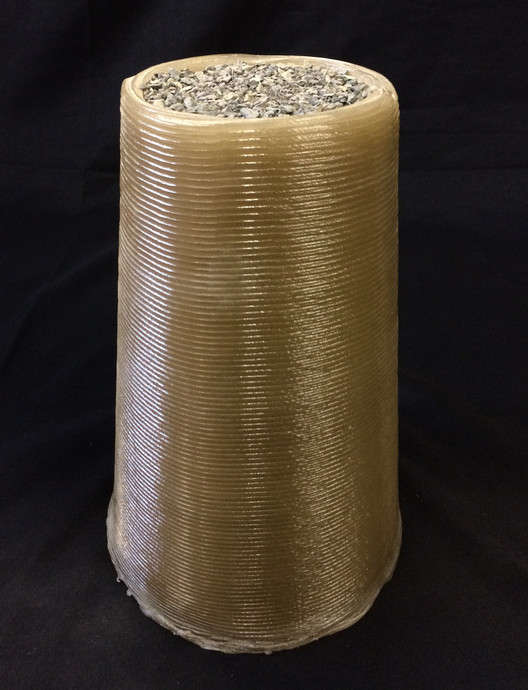
美国太空总署 NASA 发起采用3D打印技术建造人类太空居所的竞赛,并于日前宣布竞赛初始阶段经已完成,获胜者分别为福斯特建筑事务所(Foster + Partners) | Branch Technology 科技公司,以及来自费尔班克斯的阿拉斯加大学。两方均在此竞赛阶段取得了高分。
竞赛第一阶段曾由 Clouds AO 和 SEArch 建筑事务所胜出,向世界各地的建筑师和工程师发起了新任务,让他们思考在火星居住的假设性概念。到了竞赛第二阶段,设计师需采用3D打印技术制造实际物品,这些技术更有可能被运用于建造火星居所。

第二阶段中还有三关,第一关是抗压测试,让参赛团队开发3D打印材料,并使用3D打印机制作出两个样品:一截圆锥体,一个圆柱体。评审团通过实验室数据对所有参赛作品进行了评估,并给每个队伍按不同的类别打了分数。
评审团一共收到了七份方案,其中前两名队伍将分享10万美元的奖金。福斯特建筑事务所联合位于田纳西州查塔努加的 Branch Technology 科技公司得到了最高分,获得了85,930美元奖金,而来自费尔班克斯的阿拉斯加大学团队则获得了14,070万美元的奖金。

其他5支参赛队伍的作品包括来自北卡罗来纳州温斯顿塞勒姆的 Bubble Base;宾夕法尼亚州立大学伯克分校;来自伊利诺伊州斯基科的 CTL Group Mars;来自新加坡的 ROBCON;以及来自韩国首尔的 Moon X 建筑事务所。参赛作品展示出了从传统水泥到新颖蜂窝结构的一系列方法。
这项世纪挑战项目的经理 Monsi Roman 表示:“我们在这一阶段中看到了3D打印实物,这使得这一挑战的目标比以往任何时候都更有意义。 目前这只是建设整个栖息地结构的第一步,这种技术将致力于帮助人类探索新世界,是一个令人振奋的项目。”
参赛团队将会继续参加第二阶段的比赛,他们必须打印出一条完整的房梁再进行测试。 若有新团队想要参赛,也只需达到最低要求即可。
想要知道更多关于这项竞赛的咨询,请访问网站: http://www.nasa.gov/3DPHab
想要注册参赛,可前往此网站了解官方标准和相关文件: http://bradley.edu/challenge/
致谢 NASA
Clouds AO and SEArch Win NASA's Mars Habitat Competition with 3D-Printed Ice House
NASA, who recently confirmed evidence of flowing water on Mars, has deemed SEArch (Space Exploration Architecture) and Clouds AO (Clouds Architecture Office) winners of the 3D Printed Habitat Challenge for Mars. Sponsored by NASA and America Makes, the teams were asked to use indigenous materials and 3D printing techniques to build a habitat for four astronauts on Mars.
Will This Be the Concrete Used to Build on Mars?
"All we need now are a new generation of Martian architects to design buildings made of Martian concrete that will be suitable structures for humans to live and work in," concludes the MIT Technology Review in their report on a new type of concrete designed for use on Mars.
KieranTimberlake is Using Virtual Reality to Design a Home for Future Life on Mars
This article was originally published by Autodesk's Redshift publication as "Life on Mars? Architects Lead the Way to Designing for Mars With Virtual Reality." If an architecture firm is lucky, it can hit two birds with one stone on a single project-for example, prioritizing both historic preservation and energy efficiency.





